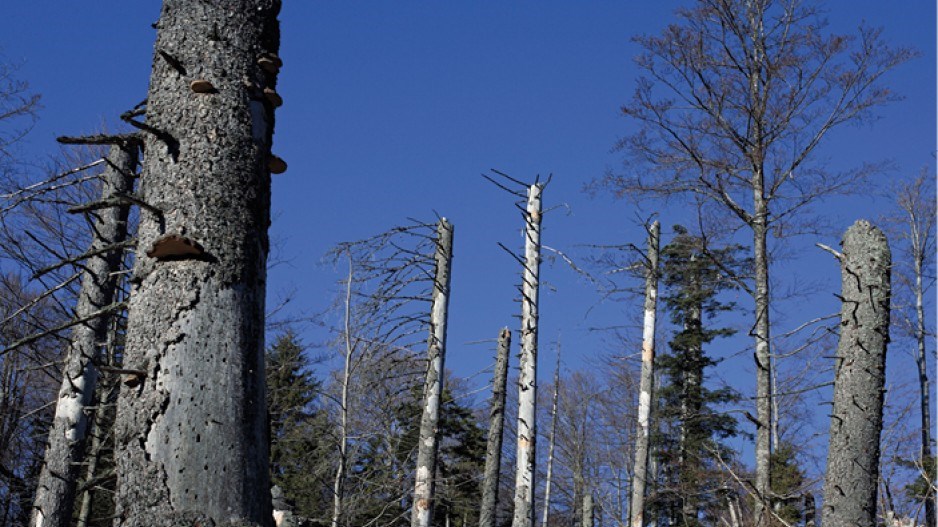Forest companies are harvesting less dead pine while increasing their green timber harvests in some Interior regions hardest hit by the mountain pine beetle, according to a Forest Practices Board report.
The report, released last week by the independent forest watchdog, raises concerns that there will not be as much timber as expected when the beetle salvage program is over.
The switch to harvesting living trees rather than dead pine trees shows there is a “rapidly changing situation” in the Interior pine forests, according to Timber Harvesting in Beetle-Affected Areas: Is It Meeting Government’s Expectations?
Harvesting as much dead pine as possible before it decays has been a central feature of the government’s mountain pine beetle policy. The province’s chief forester has raised the allowable annual cut (AAC) and directed forest companies to focus on dead beetle wood. The goal is threefold:
•extract maximum value from the trees;
•speed regeneration of new, healthy forests; and
•ensure enough green timber remains to support reduced harvesting levels in the mid-term, defined as after the beetle wood is gone but before the new forests are mature.
But in the report, the board states government projections of future timber supplies are based on assumptions that the harvest of dead pine would last until the salvage program is over. That does not appear to be happening.
“In discussions with industry foresters, the board has found general agreement that there is a growing disparity between government’s estimate of the amount of salvageable timber and the actual economically viable timber available on the ground,” the report states.
“British Columbia is in the midst of a large-scale salvage program, the likes of which has never been seen. There is nothing sustainable about this harvest; this is a one-time activity initiated by the province to recover value from the trees killed by the mountain pine beetle epidemic and to speed regeneration of affected areas. Once those trees no longer have any economic value, salvage will stop, and the province will need to sustainably manage the harvest of the remaining live trees. The issue, simply put, is that the more live trees that are harvested now, the lower the sustainable harvest level will be after the salvage program is finished.”
The board recommends that the province’s chief forester re-evaluate harvest levels more rapidly in the hard-hit areas. It also urges the government to collect the inventory data that the chief forester needs to measure performance by companies.
Steve Thomson, minister of Forests, Lands and Natural Resource Operations, said the province accepts the recommendations and is speeding up its timber supply review in one of the hardest-hit areas, the Morice Timber Supply Area, west of Burns Lake.
He added that the government is considering tightening the orders that direct companies to harvest in the hardest-hit beetle areas.
“The uplift in AAC was to focus on mountain pine beetle and dead pine. We need to work with industry to ensure that those expectations are being complied with.”
BC Council of Forest Industries vice-president Doug Routledge said companies have been harvesting in pine-dominated stands within the hardest-hit areas for 15 years. He welcomed the report, saying industry also wants a better understanding of what’s left of the forest. Better inventory information is needed.
The transition to more green timber – which the board notes has been underway since 2009 – is a natural consequence of first harvesting those stands with the highest percentage of dead pine, Routledge said. Companies are not moving out of the pine stands, but there is more green timber in the stands now being harvested.
“It’s been 15 years since the epidemic began. Guess what? In those timber supply areas that were at the leading edge of the epidemic, we are already in mid-term. This is no longer short-term,” he said.
“Those high-percentage pine stands with heavy damage are harvested and reforested or they are part of a landscape where the timber has been left for other values.” •




